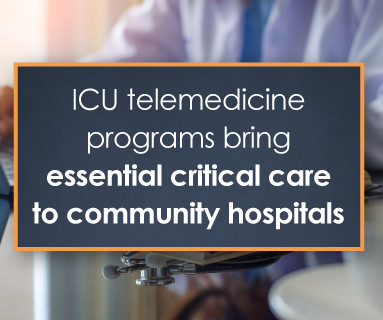ICU telemedicine programs bring essential critical care to community hospitals
Sound Physicians
MARCH 12, 2025
Alleviating overwhelm for clinicians and patients Critically ill patients who are admitted to a community hospital that isn’t resourced for ICU treatment often have to wait for care, and in many of the cases we see, timeliness matters to the outcome.













Let's personalize your content